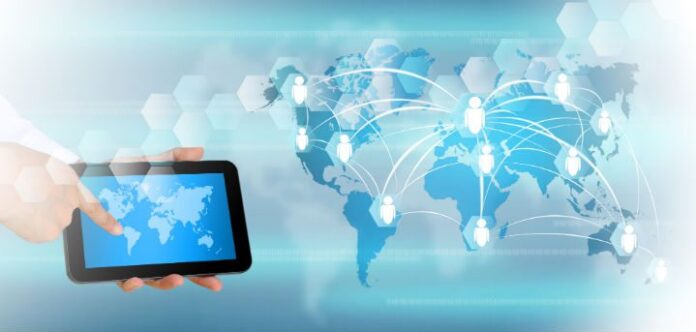Remember the dawn of the Internet? Remember all the skeptics who didn’t see its transformational genius? Remember how it became enormous?
It’s happening again.
What’s happening involves the Internet, of course, but in a newly emerging context. I am referring to a phenomenon called the industrial “Internet of Things.” Accenture defines this as the convergence of intelligent industrial products, processes and services that communicate with each other, and with people, over global networks.
Accenture estimates that the IIoT will add at least $10 trillion to the world economy by 2030, of which $1.6 trillion will accrue to the United States’ cumulative gross domestic product. If investments are greater and other improvements made to support the IIoT, that gain could reach $7.1 trillion in the country by the same year.
These eye-catching forecasts suggest there are many lucrative business opportunities to be pursued. But is there substance to back it up?
The answer is “yes.”
For the next several years, count on IIoT businesses driving electronics and high-tech industry growth.
More sensors in more devices is a key driver of IIoT
If you are skeptical of the hype, think of it this way: A rapidly growing number of devices are coming into the market that are now connected. This is simple math. A typical smartphone houses eight to 10 sensors. A leading-edge thermostat, which is an emerging device category, contains four or five. Another new type of product, a wearable fitness monitor, embeds two to three. Beyond these are many more new devices containing numerous sensors.
More electronic devices equipped with more sensors means more opportunities to connect these products to others, build more applications, embed in them more software, offer more services, travel through more networks, generate more revenue for businesses and deliver more benefits to consumers.
In new and more intelligent ways, these devices will collect, analyze and send data to more businesses, devices and people than ever to improve decision-making, business outcomes and consumer experiences.
According to a new global survey conducted to support the Accenture Technology Vision 2015, the range of emerging channels that companies say they are using to engage customers includes “wearables” (cited by 62% of survey respondents), connected televisions (68%), connected cars (59%) and smart objects (64%). In fact, 87% of survey respondents acknowledged a greater use on the edge of networks of more intelligent hardware, sensors and high-tech devices.
Three trends driving IIoT
How IIoT has coalesced is traceable to three fundamental trends. First, Internet-connected networks are becoming ubiquitous. More people than ever can afford to connect to these networks.
Second, prices of devices that connect to the Internet continue to drop, making them available to many more people. A growing percentage of the global population, for example, can afford to buy a cellphone, wearable device, PC or smart thermostat.
Third, barriers to entry using Internet-connected devices continue to plummet. It costs less than ever for people to start a business on the Internet. They can use inexpensive IIoT devices, Internet connections they don’t have to pay to use and software already written by someone else.
Going forward, a big challenge will be deciding in which IIoT opportunities to invest. Here are two worth considering:
Pursuit of the IIoT health care market
It’s clear the health care market is going to be one of the first and largest for IIoT. Consider the potential for hospitals where preventable medical errors remain a leading cause of death. These errors are often caused by false alarms, slow responses and incorrect information.
By networking distributed medical devices, alarms can become smarter so they only get triggered when multiple devices indicate patient danger. Adding sensors to checkpoints allows clinicians to track their compliance with protocols and safety standards. And connecting measurements to patient treatments enables smart drug delivery systems to react to their conditions faster and more reliably.
Aerospace and defense
Aerospace and defense are other big IIoT opportunities. One of the reasons is that more sensors are being embedded in more airplane components. Consider a scenario involving an aircraft engine oil pump. Sensors collect data indicating the pump is likely to fail within a few hours. The data transmits off the plane to a predictive maintenance system.
At the plane’s destination airport, the maintenance team becomes proactive with that information. At the airport gate the team has a replacement pump ready to be installed when the plane lands. This keeps the aircraft in service instead of having to take it offline for an unplanned and expensive maintenance event.
Final thoughts
Throughout the electronics and high-tech industry, executing IIoT strategies should be at the top of the agenda. And the focus should be on delivering to customers what they really want: not more products or services, but more meaningful business outcomes. These companies need to seize this big moment now.
Bart Fischer is a managing director for Accenture’s electronics and high-tech group. He can be reached at bart.j.g.fischer@accenture.com.
Editor’s Note: The RCR Wireless News Reality Check section is where C-level executives and advisory firms from across the mobile industry share unique insights and experiences.

